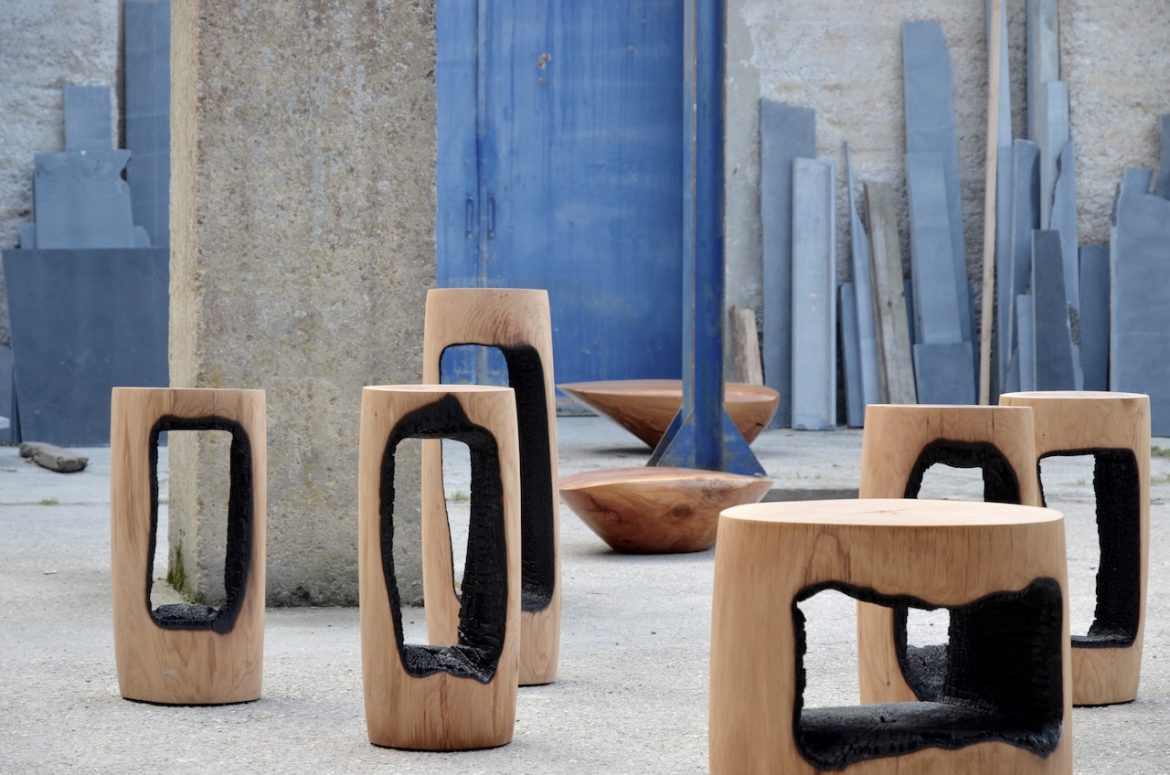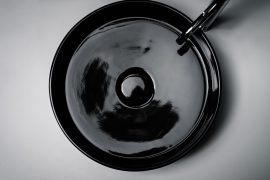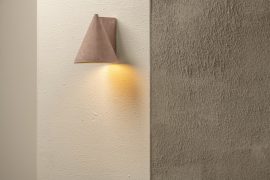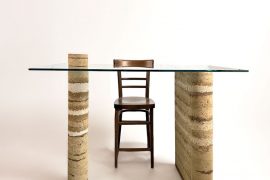They all graduated from the Academy of Fine Arts in Maastricht and have known each other for 13 years, except Damien Gernay who joined Die Werkstatt through Kaspar Hamacher.
We are a family-driven group of people working in the same field without being a collective or a community,
states Hamacher. It’s less the work but more the conviviality (Gemütlichkeit) that unites them. They share the same interests and feelings about life and taking care of each other. They are Die Werkstatt, guided by the idea that you must find a place to be wherever you are. You carry Die Werkstatt in and with you.
What is your definition of Die Werkstatt? Does it go beyond the concept of the workshop? Is it a community? A mindset?

Valentin Loellmann: Die Werkstatt is the place where I work, the place where I get all my inspiration. It is my continuously changing moodboard. It is where everything happens. It serves
my own inspiration and operates under my full control. It’s not a community; instead, it’s a holistic place. People have to fit in the atelier and interact with it; it’s not my house. In fact, the place is quite selective. The energy of the atelier is created by a chosen group of people who are working together.

Fabian von Spreckelsen: Die Werkstatt is where I work; it’s a place where the energy is satisfying. I can’t make my pieces without having the appropriate environment. It used to be an old workshop for cars. The flourishing karma of the place motivates me to work and achieve my high-end pieces. I feel comfortable, at home and happy to create. The place is shaped by me and reassembling objects. Craftsmanship is basic and minimalistic and does not oblige you to deal with technologies.
The tools I use to achieve my pieces are quite simple. The drill in “particular is key. They are the same types of tools used by my grandfather, a man who did construction in the 1950s and 1960s.

Kaspar Hamacher: I am Die Werkstatt. To me, it could be anywhere where I feel comfortable: inside or outside, in the forest or at the workshop. It’s in me. When we are friends, we are Die Werkstatt. You go to the place where it is easiest to find yourself. Now I feel comfortable and Die Werkstatt is also a resting place where I can take time, often alone, and therefore I feel like I am Die Werkstatt.

Jonas Loellmann: Die Werkstatt is a personal space to collect images & objects… and a place to give identity to your work. I am not working with machines; I am more like a collector and who uses instruments to capture photographs. Essentially, the workshop is a harbour and I am a fisherman. I fit perfectly into the surroundings and can focus without being influenced by others. It’s a place I cannot share it with anyone else because I need it as a space to close myself off and protect my fragile
ideas and visions so they can prosper.

Damien Gernay: Die Werkstatt is my second family. I am very shy and introverted, so I need a space where I can transform an idea into something more. Then the materials come in. I am basically working on materiality. This is a place for thinking and not so much a physical space, but rather an open, creative space for me.
Is the physical work essential for you? In what sense? Could you briefly describe your workshop’s process?
 Valentin Loellmann
Valentin Loellmann
 Valentin Loellmann
Valentin Loellmann
V.L.: In our case, the physical is essential. Personally, I do morecraft pieces than design. For me, it also comes down to quality thanks to the shaping of the pieces and the expression
of my own feelings. My furniture pieces are never prepared on the computer and are never drawn. I start with a rough piece of wood in my hands. Finishings are at the end. The process is organic and sculptural, but very controlled. Let’s say that it’s more of a psychological process.
 Fabian von Spreckelsen
Fabian von Spreckelsen
F.v.S.: It’s important for me to create with my own hands: I make models and fully control the welding process.
K.H.: I start with a concept and then I apply it directly in the material. I make no drawings or models and I start from scratch. I have an idea of a functional or conceptual object that I then try to communicate. Wood is a medium. It’s a composition that allows me to express my feelings.
 Kaspar Hamacher
Kaspar Hamacher
J.L.: I collect pictures to translate into a physical shape. I work on negatives, scan, look and pre-select, print. I look for timelessness, not always connected to daily experience. I have
realized that framing can also be a handmade process. Working with wood used by Valentin it gives more added value. The footprint is key. I have not my own darkroom, but the post process is mine and I add a personal touch.
 Damien Gernay
Damien Gernay
D.G.: I am more interested by the material than the physical effort. It emerges from an experimental process. I do all my prototypes except when I have not mastered the techniques
myself.
What is your DNA as designer/photographer? What are your values and attitudes? How do you perceive the role of contemporary applied arts and experimentation
in your work?
V.L.: Money and business are key in my work and I need an addiction to success to have the great visions I want to implement. I have realized that I like to get into more ambitious projects. I need the reflection of success to be able to put so much effort into it. I feel pressured from that vision and I try to secure my environment to be able to continue it. It’s about the work and how it reflects in itself. I need to feel that I can reach the right audience. Taking risks is not about the profit, but it’s important to maintain it. It’s one part of the machine to continue with your work. Not to sell more, but to work with even more inspirational people. I like working on the edge,
pushing the limits further.
K.H.: My roots are: origin, childhood, images and dreams, always together with what I feel. I shape the wood until nothing.Less is more. Then I feel burned out.
J.L.: I realize that I don’t do the work to apply it to the market. The main motivation is to pass on a certain awareness or perception of things. You experience life and find out about the
truth based on experiences and ideas and out of that, you can create a story. Family is the basic surrounding for the story, but I also need to escape it to reach a very pure and deep intuition and to open all the channels around me. The atelier is the ‘bubble’ where I can be. I like going there at night to do what I want.
D.G.: My work as designer artist or artist/designer is mainly experimental. It is the prolongation of my thoughts. I try to compose my own material language. I have a sensitive outlook of the world that surrounds me and my perception is key. Touch becomes volume, vision becomes colour and an acoustic frequency is translated into a shape. I like to assemble and have materials coexisting with each other. ‘Imperfect by design’ defines my process and I believe that drawing can guide you in another direction while the materiality will go to the point you search for.
Interview by Lise Coirier
Exhibition from 9 February unti 6 May 2018
Vernissage on Thursday 8 February 2018 from 6-10 pm
Press preview from 5 pm
Spazio Nobile by Pro Materia Gallery, Contemporary Applied Arts, Design & Photography
Rue Franz Merjay 142 -1050 Brussels.
+32 (0)2 768 25 10
Wedn. – Sat., 11.00-18.00 & by appointment
www.spazionobile.com
@spazionobilegallery / @valentin_loellmann / @jonasloellmann /
@atelierkasparhamacher / @fvs_art / #damiengernay




